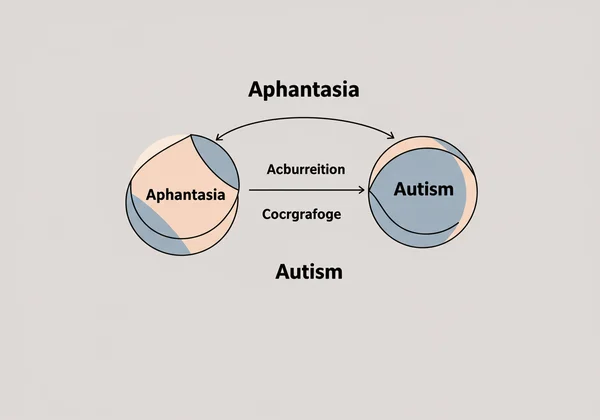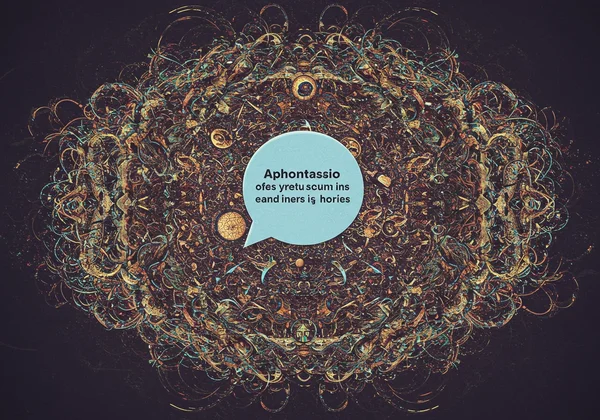Aphantasia & Neurodiversity: Autism & ADHD Links Explored
Have you ever felt your mind works differently from others? Perhaps you’ve discovered you have aphantasia—the inability to voluntarily create mental images—and now you’re wondering if this unique trait is connected to other aspects of your cognitive profile. It’s a common question, particularly regarding the links between aphantasia autism, and ADHD. Is aphantasia a type of autism? Or is there a connection with ADHD? Let's explore these complex relationships, offering a clear, supportive perspective to help you navigate your journey of self-discovery.
The human mind is incredibly diverse, and understanding its variations is key to understanding ourselves. If you're starting to explore your own cognitive landscape, a great first step is to get a baseline understanding of your visual imagery. You can begin this journey of self-reflection with a free aphantasia test to gain valuable insights into your mind's eye.
What is Neurodiversity and Where Does Aphantasia Fit?
Before diving into specific connections, it's essential to understand the concept of neurodiversity. This is the idea that variations in brain function and behavioral traits are a natural part of human diversity. Conditions like autism and ADHD are not seen as "deficits," but rather as different ways of thinking, learning, and perceiving the world.
Aphantasia fits perfectly within this framework. It's not a disorder or a disease; it is a specific variation in cognitive function, much like being left-handed or having a perfect pitch. It simply describes a different way of experiencing memory, imagination, and thought—one that relies less on visual data and more on facts, concepts, or other senses. Recognizing aphantasia as a form of neurodivergence empowers us to appreciate the wide spectrum of human consciousness.

Defining Aphantasia: Beyond the Blind Mind's Eye
Aphantasia is often called having a "blind mind's eye," but it's more nuanced than that. It exists on a spectrum, from having absolutely no mental imagery (total aphantasia) to having dim or fleeting images (hypophantasia). For those with aphantasia, recalling a loved one’s face might involve remembering a list of features—their hair color, eye shape, the sound of their voice—rather than "seeing" them in their mind. This unique way of processing information is a key part of the neurodivergent aphantasia experience.
The Spectrum of Human Cognition & Variation
Human cognition is not a one-size-fits-all system. We all have a unique cognitive profile, with strengths and weaknesses across different areas like memory, focus, creativity, and social interaction. Neurodiversity celebrates this variation. By understanding where aphantasia, autism, and ADHD fit on this spectrum, we can move away from labels of "normal" and "abnormal" and towards a more inclusive understanding of the brain. The first step in charting your own profile is a simple aphantasia self-assessment.
Exploring Connections: Aphantasia & Autism Spectrum Disorder (ASD)
One of the most frequently asked questions is about the relationship between aphantasia and Autism Spectrum Disorder (ASD). It's crucial to state upfront: aphantasia is not a form of autism, nor is it a diagnostic criterion for it. They are separate neurological phenomena. However, emerging research and anecdotal evidence suggest they may co-occur more frequently than in the general population.
This potential overlap has led to a lot of curiosity and discussion within both communities. People are keen to understand if one trait influences the other or if they share underlying neural mechanisms.
Current Research on Shared Traits & Overlaps
Some studies have indicated that individuals on the autism spectrum report a higher incidence of both aphantasia (lack of imagery) and its opposite, hyperphantasia (extremely vivid imagery). This suggests that sensory processing and imagination may function differently in autistic individuals. While the research is ongoing and far from conclusive, it points towards an interesting aphantasia connection worth exploring further.

Key Distinction: Aphantasia vs. Core ASD Characteristics
Despite any potential correlation, the defining characteristics of ASD are distinct from aphantasia. ASD is primarily characterized by persistent differences in social communication and interaction, alongside restricted or repetitive patterns of behavior, interests, or activities. Aphantasia, on the other hand, is solely related to the experience of visual imagery. A person can have aphantasia without any autistic traits, and a person can be autistic and have a vivid visual imagination.
Investigating the Links Between Aphantasia & ADHD
Another common area of inquiry is the link between aphantasia and Attention-Deficit/Hyperactivity Disorder (ADHD). Like with autism, there is no evidence to suggest that aphantasia is a symptom of ADHD or vice versa. They are distinct conditions. However, individuals with both have reported interesting overlaps in their cognitive experiences, particularly concerning memory and focus.
Is aphantasia an ADHD thing? Not directly, but their co-occurrence can create a unique cognitive profile. Understanding both can be key to developing effective personal strategies for learning and productivity.
Shared Cognitive Experiences: Focus, Memory, & Internal Worlds
Some people with ADHD describe having a "noisy" mind with many thoughts competing for attention. For those who also have aphantasia, this internal experience is purely conceptual or verbal, without a visual component. Furthermore, both ADHD and aphantasia can impact memory recall. An individual with ADHD might struggle with working memory, while someone with aphantasia relies on non-visual semantic memory, which can sometimes be less immediate for recalling specific events.

Understanding Co-occurrence vs. Causal Relationship
It is vital to distinguish between co-occurrence and causation. Just because two traits appear together more often than by random chance doesn't mean one causes the other. They may be influenced by similar underlying genetic or developmental factors, but they remain separate traits. The only way to begin untangling your own profile is through dedicated self-reflection, and a visual imagery vividness test is a perfect starting point.
The Nuance of Cognitive Profiles: Overlap or Coincidence?
So, are these connections just a coincidence, or is there a deeper relationship? The truth is likely somewhere in the middle. The brain is not a collection of isolated modules; it's a deeply interconnected network. Variations in one area can naturally influence functions in another.
Understanding these nuances is less about collecting labels and more about building a holistic picture of your own mind. It's about recognizing that your way of thinking is valid and unique.
Why These Connections Are Often Hypothesized
The connections between aphantasia, autism, and ADHD are often hypothesized because they all relate to fundamental aspects of cognition: sensory experience, memory, and internal monologue. When individuals discover one unusual aspect of their cognition (like aphantasia), they naturally become more attuned to other ways their experience might differ from the norm. This heightened self-awareness often drives the exploration of other neurodivergent traits.
The Importance of Personalized Self-Exploration
There is no substitute for personalized self-exploration. While articles like this can provide context and scientific understanding, your cognitive profile is uniquely yours. Taking a scientifically inspired aphantasia test is an empowering first step. It provides a concrete data point that can serve as a foundation for deeper understanding, helping you connect the dots between your various cognitive traits and build a more complete picture of who you are.
Embracing Your Unique Cognitive Landscape
Navigating the world of neurodiversity can be complex, but it is ultimately a journey of empowerment. The potential links between aphantasia, autism, and ADHD highlight the intricate and fascinating ways our brains can be wired. While they are distinct conditions, their co-occurrence can shape a truly unique cognitive experience.
Remember, the goal is not to fit into a box but to understand the shape of your own mind. By embracing cognitive diversity, you can better appreciate your strengths and develop strategies to navigate challenges. The most powerful tool in this process is knowledge. If you're ready to "Explore Your Mind's Eye" and take the first step towards deeper self-awareness, start your aphantasia test now.

Common Questions About Aphantasia & Neurodiversity
Is aphantasia considered a type of neurodivergence?
Yes, aphantasia is widely considered a form of neurodivergence. It represents a natural variation in human cognition, specifically in the ability to create voluntary mental imagery. It is not a disorder but rather a different way of experiencing thought and memory.
Can someone have both aphantasia and autism?
Absolutely. While they are distinct conditions, research and anecdotal reports suggest that aphantasia may be more common in autistic individuals than in the neurotypical population. Having both creates a unique cognitive profile, but one does not cause the other.
Is aphantasia more common in people with ADHD?
The link between aphantasia and ADHD is less studied than the link with autism, but it is an area of growing interest. Many people in online communities report having both. If you're curious about where you stand, taking an online aphantasia test can provide a piece of the puzzle.
What are common traits of people with aphantasia?
Common traits include difficulty visualizing faces or scenes from memory, a tendency to think in concepts or words rather than pictures, and sometimes a different experience with dreaming. However, many people with aphantasia have excellent semantic memory and strong abstract reasoning skills.
How can I tell if I have aphantasia?
The most reliable way to begin your self-discovery is by taking a structured self-assessment. The classic "apple test" is a simple start, but a more comprehensive mind blindness test, like the VVIQ-inspired questionnaire, can give you a clearer idea of where you fall on the visual imagery spectrum.
Disclaimer: This article is for informational purposes only and is not a substitute for professional medical or psychological advice, diagnosis, or treatment. If you have concerns about your health or cognitive function, please consult with a qualified professional.